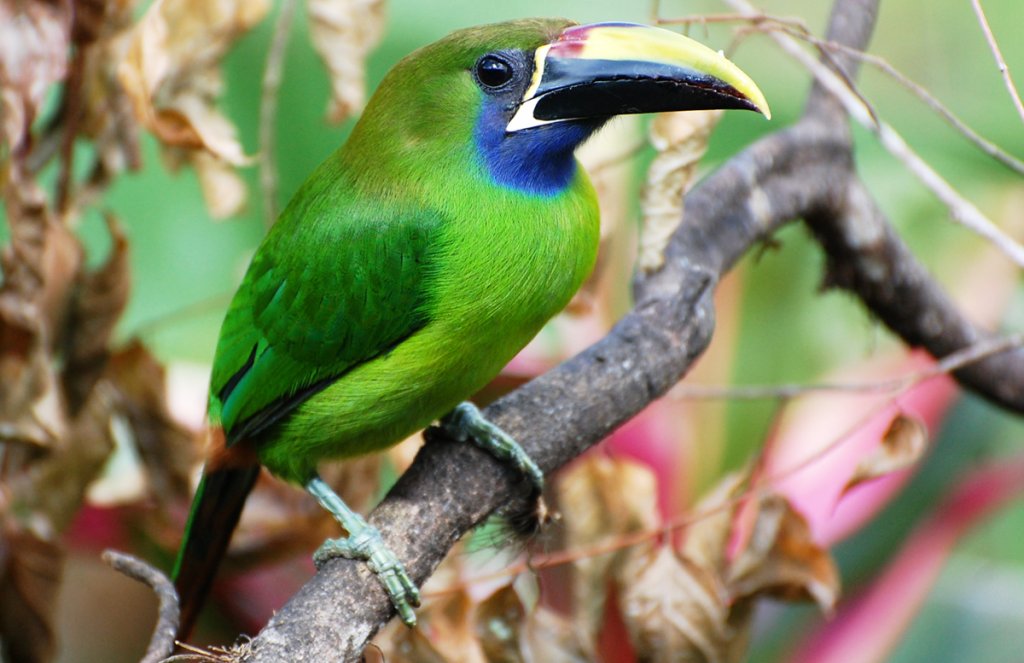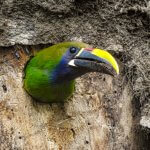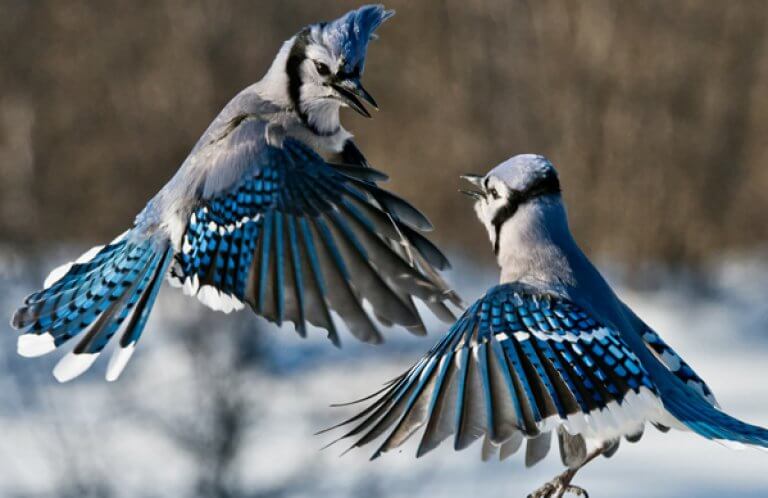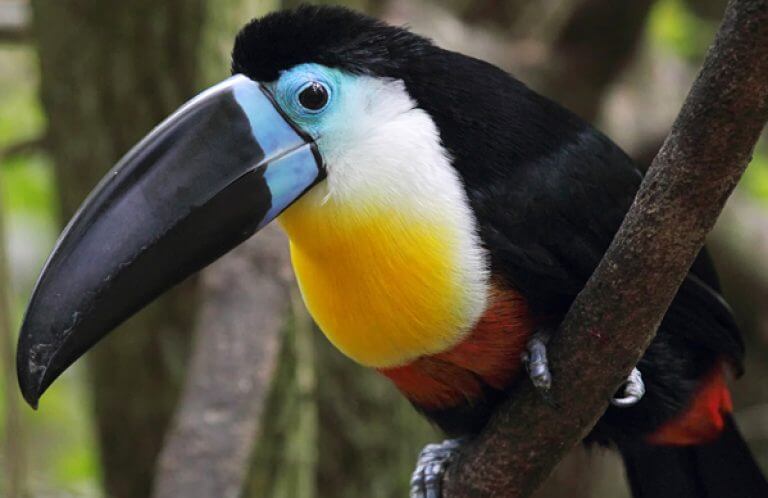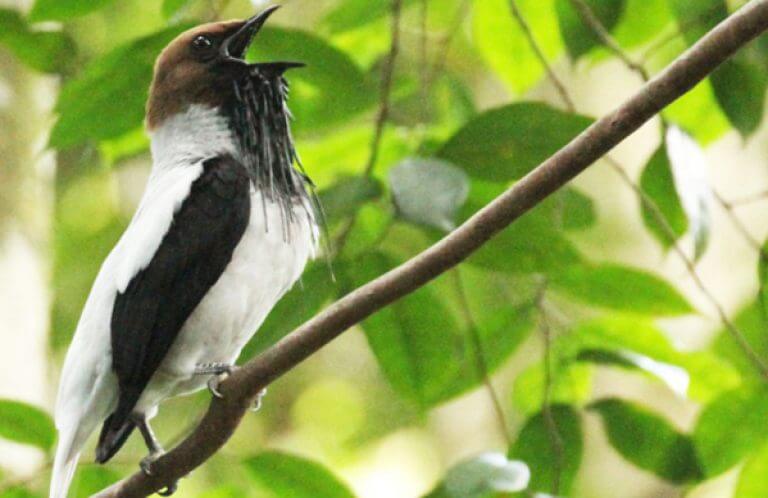About the Northern Emerald-Toucanet
The Northern Emerald-Toucanet, true to its name, has striking green plumage and occurs further north than any other toucan species, with a range extending into east-central Mexico. It belongs to a genus of multiple other small, green toucanets, but can be distinguished by its chestnut undertail and tail tips. Males and females look alike, with the males slightly larger. It's one of the smallest of the toucans – at about a foot in length, only a bit longer than a Blue Jay (although its large, colorful bill makes it appear bigger.)
This little toucan plays an important role in the humid tropical forests where it's found.
Rainforest Gardeners
The Northern Emerald-Toucanet, like relatives ranging from Channel-billed and Keel-billed Toucans to the Saffron Toucanet, feeds heavily on fruit, which it swallows whole. This habit makes these birds important seed dispersers for rainforest trees. Multiple studies have shown that tree seeds germinate more successfully after passing through the digestive tract of toucans and other fruit-eating birds species, such as the Banded Cotinga, Hooded Berryeater, and Bearded Bellbird.
Songs and Sounds
The Northern Emerald-Toucanet is a vocal species and can often be heard sounding off in a series of low, barking calls.
Listen here:
Breeding and Feeding
The Northern Emerald-Toucanet is a gregarious bird, living in groups of up to 5-10 individuals. Within these groups, pairs form monogamous, life-long bonds, cemented by mutual feeding and “bill fencing,” where the pair rhythmically taps their bills together, a ritual that helps maintain their pair bond.
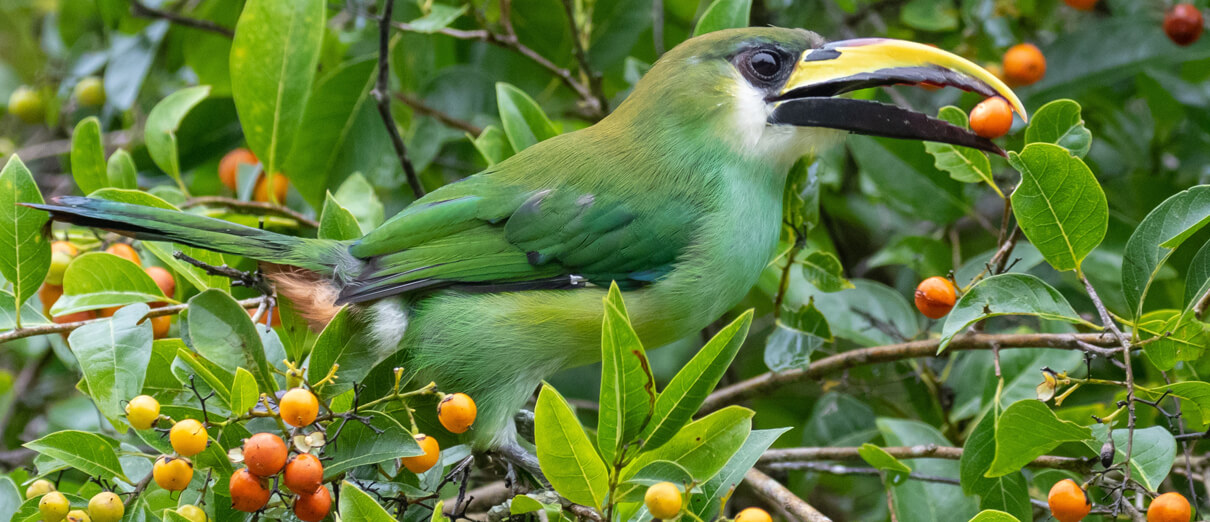
Like species ranging from the Elegant Trogon to the Rusty-faced Parrot, the Northern Emerald-Toucanet is a “secondary” cavity nester, re-using a tree cavity excavated by another bird (usually a woodpecker) as a nesting site. The female emerald-toucanet lays a clutch of 3-4 white eggs, which she and her mate take turns incubating. Both sexes care for and feed the altricial nestlings, which hatch blind and featherless, but grow quickly and fledge within a few months.
Ever gregarious, the Northern Emerald-Toucanet forages for food in pairs or small flocks, mostly in the forest canopy or mid-levels. Although it mainly feeds on fruit, it is omnivorous, and will also take insects, lizards, and the eggs and nestlings of smaller birds. It feeds while perched, reaching out with its long bill to glean prey or pluck fruit.
Region and Range
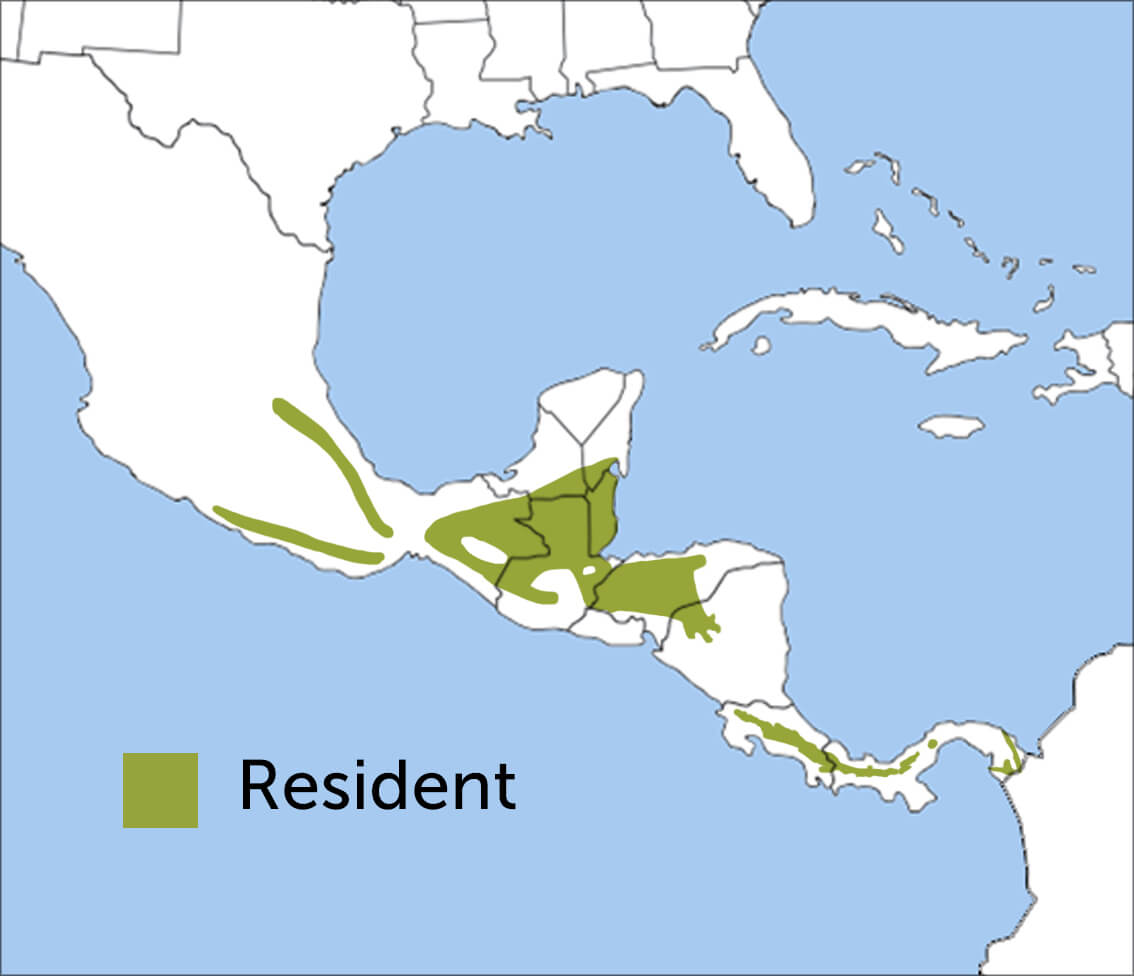
This toucan is the northernmost-occurring member of its family, with a range reaching from Central America into parts of eastern Mexico. The Northern Emerald-Toucanet is highly variable in appearance, with eight subspecies recognized that differ in throat color and bill pattern, two of which are considered separate species by some authorities. Like other toucans, it is non-migratory, although it will range widely each day in search of food.
Conservation
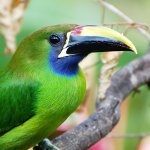
Help support ABC's conservation mission!
Like other birds of neotropical forests, the Northern Emerald-Toucanet continually faces the threat of habitat loss. In addition, this attractive little toucan is often trapped for the pet trade.
ABC and local partners protect habitat that shelters the Northern Emerald-Toucanet in several Central American and Mexican locations. In Cerro San Gil, ABC helped Guatemalan partner FUNDAECO purchase more than 1,000 acres of rainforest habitat that shelters resident birds such the Northern Emerald-Toucanet and Neotropical migrants such as the Wood Thrush and Cerulean Warbler. These sites are part of the Conservation Coast BirdScape, a priority site for bird habitat conservation in Central America.
Get Involved
Many of the rarest bird species in the Western Hemisphere remain relatively unknown. You can learn more about these birds and the threats they face by signing up for ABC's Bird of the Week email series, which frequently highlights these fascinating birds.
American Bird Conservancy and our partners throughout Latin America and the Caribbean have created and expanded more than 100 bird reserves, which protect upward of 1.1 million acres of vital habitat. Together, we've planted more than 6.8 million trees, helping to restore degraded and damaged habitat. You can help us continue to protect endangered birds by making a gift today.





































